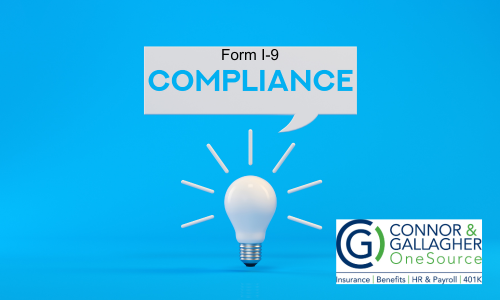In today’s regulatory environment, I-9 form compliance has never been more critical for businesses. With the federal government taking a stricter stance on employment verification and legal work status, employers must ensure they are properly verifying the work authorization of their employees to avoid costly penalties, legal risks, and reputational damage.
Why I-9 Compliance Matters
The Form I-9, Employment Eligibility Verification is a legal requirement for all U.S. employers to complete for every employee hired after November 6, 1986. This form confirms an individual’s identity and authorization to work in the United States. Failing to comply can lead to steep fines, audits, and potential criminal charges.
Recent government crackdowns have reinforced the importance of proper documentation. Employers who fail to complete or retain I-9 forms correctly could face penalties ranging from $272 to $2,701 per form for first-time offenses, with repeat violations reaching up to $27,018 per form.
Recent Government Stance on Legal Work Status
Federal agencies such as Immigration and Customs Enforcement (ICE) and the Department of Homeland Security (DHS) have ramped up efforts to enforce immigration and employment laws. This includes:
- Increased workplace audits – Employers are being audited more frequently, often without warning.
- Higher penalties for non-compliance – Even minor errors on I-9 forms can result in significant fines.
- Focus on unauthorized employment – The government is holding businesses accountable for knowingly or unknowingly hiring undocumented workers.
Common I-9 Mistakes That Put Businesses at Risk
Many businesses unknowingly put themselves at risk by making errors on their I-9 forms. Some of the most common mistakes include:
- Incomplete or missing forms – Every employee must have an I-9 on file.
- Failing to re-verify work authorization – Employers must track and update expired work permits.
- Improper document verification – Employers must inspect original documents and determine their validity.
- Late completion – Section 1 must be completed by the employee on their first day of work, and Section 2 must be completed by the employer within three business days of the employee’s start date.
Best Practices for I-9 Compliance
To ensure compliance and avoid potential penalties, businesses should take the following steps:
- Conduct Regular Internal Audits – Periodically review I-9 forms for accuracy and completeness.
- Train HR and Hiring Managers – Educate staff on proper I-9 procedures to prevent errors.
- Use E-Verify (Where Required) – While not mandatory nationwide, E-Verify helps confirm work authorization quickly.
- Maintain Secure Records – Keep I-9 forms separate from employee files and follow proper retention rules.
- Seek Legal or HR Guidance – Work with compliance experts to stay ahead of regulatory changes.
Final Thoughts
I-9 compliance is not just about avoiding fines—it’s about protecting your business from legal and financial risks. As the government intensifies its enforcement efforts, proactive compliance is the best defense. By taking the right steps now, employers can ensure they are following the law, maintaining a compliant workforce, and safeguarding their company’s reputation.
If you have questions about your company’s I-9 processes or need a compliance audit, CGO’s HR experts are here to help. Contact us today to ensure your business stays compliant.
Questions? Contact us at info@GoCGO.com.

This blog was posted on February 13, 2025.
The views expressed by the authors on this website do not necessarily reflect the views of the website owners, operators, or any affiliated organizations. This blog is for educational and/or informational purposes only and does not constitute tax, financial, or legal advice.
While we’ve done our best to provide accurate and current information at the time of writing this blog, the information within this article is not guaranteed to be complete, correct, timely, current or up-to-date. Similar to any printed materials, the information may become out-of-date. The Authors undertakes no obligation to update any Information on the Site; provided, however, that the Authors may update the Information at any time without notice in the Authors’ sole and absolute discretion. The Authors reserve the right to make alterations or deletions to the Information at any time without notice.






